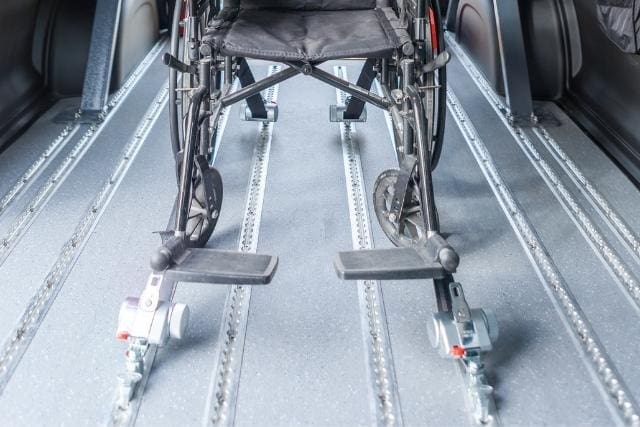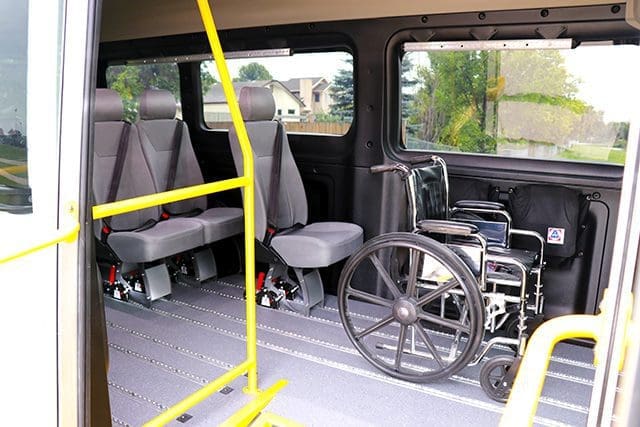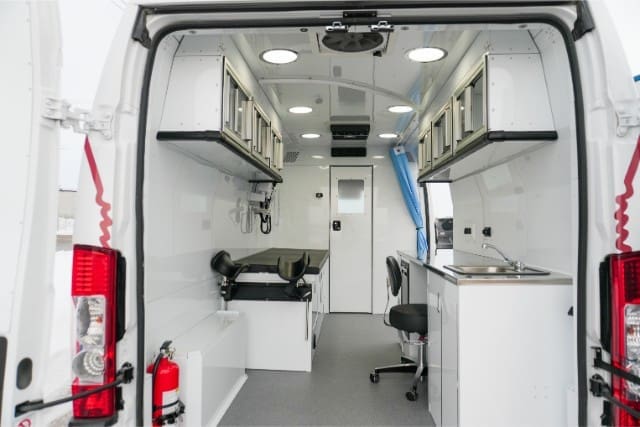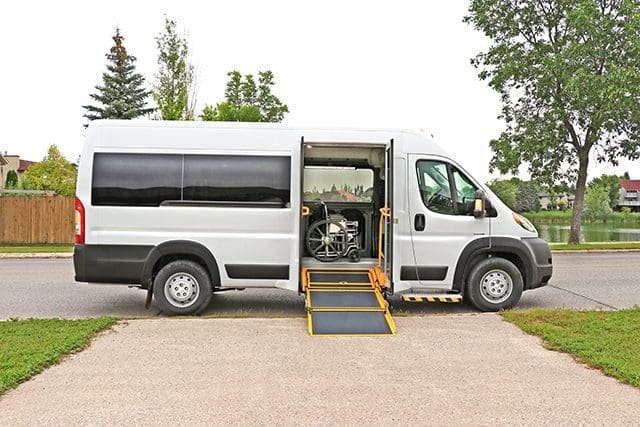Are you wondering about the legal requirements for transporting wheelchairs? Wheelchairs are important tools for many people with disabilities who need help to get around. But moving wheelchairs can be tricky and risky, especially when you’re traveling in a car, bus, train, ferry, or plane. Knowing the rules for transporting wheelchairs is important because it helps keep everyone safe and comfortable. It also prevents any legal problems or fines that could happen if you don’t follow the rules without meaning to.
At MoveMobility, we care about knowing the laws and rules for moving wheelchairs safely and effectively. Our goal is to make vehicles that make it easier for people to have access to healthcare and transportation. We always try to be honest and include everyone and develop solutions that fit your needs. All our modified vehicles are approved by Transport Canada.
In this blog post, we’ll take a look at some of the rules for transporting wheelchairs in Canada. We always recommend double-checking with your local authorities and service providers if you’re not sure about any rules.
Wheelchair Transportation Regulations
Before diving into the legal requirements for transporting wheelchairs, it helps to take a closer look at the Accessible Transportation for Persons with Disabilities Regulations. In Canada, the Accessible Transportation for Persons with Disabilities Regulations (ATPDR) set out the obligations of transportation service providers regarding the use of mobility aids and other assistive devices by persons with disabilities. For the purpose of this article, we’ll be referring to wheelchairs.
The ATPDR applies to federal transportation service providers, such as airlines, railways, ferries, and interprovincial bus operators, as well as terminal operators and security screening authorities.
What does the ATPDR cover?
The ATPDR covers various aspects of transporting wheelchairs, such as:
- Services for travelers who use mobility aids and other assistive devices.
- The accessibility of transportation equipment and terminals for travelers who use mobility aids.
- Publishing information on services and related conditions, such as the dimensions and weight limits of mobility aids that can be transported, the procedures for requesting assistance or making a reservation, and the fees or charges that may apply.
- Retaining information and documentation for future trips, such as the traveler’s contact information, mobility aid specifications, service needs, and preferences.
- Personnel training on interacting with and assisting travelers using mobility aids and other assistive devices.
The ATPDR (Accessible Transportation for Persons with Disabilities Regulations) also discusses another important rule: the National Standard of Canada CAN/CSA B651-18. This rule specifies how transportation equipment and terminals should be designed and built to be accessible.
Apart from the ATPDR, there are other laws and rules in Canada that apply to moving wheelchairs. Different provinces or territories might have their own specific requirements. For example, they might have rules about securing wheelchairs in vehicles or using seat belts or harnesses.
If your company includes wheelchair use and plans to travel, it’s a good idea to check with your transportation company and local authorities to make sure you follow all the right rules. They can give you the information you need to travel safely and smoothly.
Transportation of Wheelchairs

There are also a couple of other things that need to be considered in the legalities of transporting wheelchairs around.
Vehicle Type
The kind of vehicle you use to move a wheelchair can change the rules you have to follow. If you’re using a car, van, or SUV, there are some important things to keep in mind.
First, you have to make sure the wheelchair is secured well. It shouldn’t block the driver’s view or get in the way of any safety features in the vehicle. You might need to use special equipment like ramps, lifts, or tie-downs to help get the wheelchair in and out of the vehicle safely. It’s all about making sure everything is set up properly for a smooth and safe ride.

If you use a commercial vehicle such as a taxi, bus, or shuttle, you need to comply with the accessibility standards and regulations that apply to your province or territory. These include having a minimum number of accessible vehicles in your fleet, providing adequate space and equipment for wheelchair users, and training your staff on how to assist wheelchair users.
Province or Territory
The rules for moving wheelchairs may be different depending on the province or territory you’re in. Let’s take British Columbia as an example. There, you’ll need a special permit or license to transport wheelchairs. But in most other places, you won’t need one.
Different provinces or territories might have their own specific rules about securing and storing wheelchairs in vehicles, while others might follow Transport Canada’s general guidelines.
To be on the safe side, it’s a good idea to check with your local government before you travel with a wheelchair. They can tell you the exact laws and regulations you need to follow. It’s always better to be informed and make sure you’re doing everything right.
Wheelchair User’s Needs
The rules for moving wheelchairs also depend on the person using the wheelchair. Some people have special medical needs and may need to bring devices like oxygen tanks or ventilators. These devices have specific rules for handling and storing them safely.
Also, different wheelchair users have their own preferences. Some like to stay in their wheelchairs during the ride, while others prefer to transfer to a regular seat. It’s important to listen to and respect what they want.
If you’re planning to transport a wheelchair in Canada, you need to know and follow the rules that apply to your situation. Wheelchairs are considered special tools for getting around, and there are different rules depending on the type of vehicle, the province or territory you’re in, and the person’s specific needs.
Following these rules is good for both the driver and the person in the wheelchair. It helps prevent accidents and injuries by making sure everything is done safely and efficiently. Safety is always the top priority.
Final Thoughts

At MoveMobility, we’re aware that transporting wheelchairs in Canada can be a complex and challenging task that requires careful planning and preparation. You need to be aware of the legal requirements that apply to your situation and follow them accordingly. By doing so, you can ensure a safe and comfortable transportation experience for yourself and the wheelchair user.
If you or someone you know wants more information on wheelchair vans, feel free to take a look at the following articles:
- How to choose a wheelchair van
- 5 reasons you should lease your wheelchair accessible van
- How much does a wheelchair van cost?
Alternatively, if you think you’re ready to get started with your next wheelchair van today, don’t hesitate to contact us.








